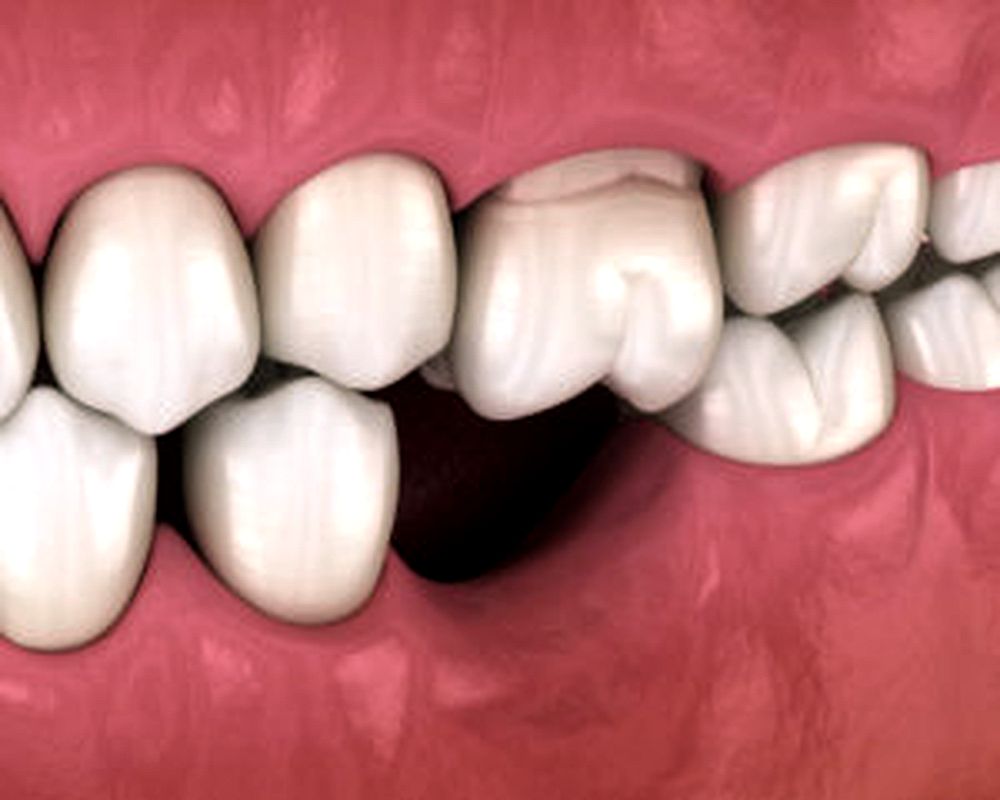Wisdom teeth, or third molars, typically erupt between the ages of 17 and 21, coinciding with the period when patients often notice anterior crowding of the mandibular incisors.
📌 Recommended Article :
Dental Article 🔽 8 interesting facts about the Wisdom Tooth ... While they often emerge in late adolescence or early adulthood, their presence and impact on oral health have been subjects of extensive study.This temporal association has led to the widespread belief that wisdom teeth push other teeth forward, causing malalignment. However, modern research challenges this assumption, emphasizing multifactorial causes of dental crowding.
Advertisement
✅ Current Systematic Evidence
° A systematic review by Lyros et al. (2023) found no statistically significant association between the presence of mandibular third molars and late incisor crowding. The effect was minimal and lacked clinical relevance.
° Conversely, Palikaraki et al. (2024) reported a slight tendency toward increased crowding and reduced arch length in patients with third molars. However, the authors highlighted the need for stronger prospective evidence.
📌 Recommended Article :
Video 🔽 Post-extraction care for wisdom teeth - Tips and recommendations ... Post-operative care is important, which is why we share some tips and recommendations to avoid complications after wisdom tooth extraction.✅ Observational and Clinical Studies
° Aldhorae et al. (2025), using CBCT in a Yemeni population, found no significant difference in Little’s irregularity index between patients with or without mandibular third molars
° Richardson (1982) suggested a passive role of third molars in late lower crowding, but not strong enough to justify causality.
° Demyati et al. (2024) showed that third molar angulation and lack of space might worsen preexisting crowding, but again, not as a primary cause.
📌 Recommended Article :
Video 🔽 Dental Abscess, Fistula, Cellulitis, and Ludwig's Angina: Differences, Symptoms & Treatment ... While fistulas and cellulitis are often managed on an outpatient basis, Ludwig’s angina remains a true medical emergency.✅ Professional Opinions
A survey conducted by Gavazzi et al. (2014) among Italian orthodontists and oral surgeons revealed consensus that wisdom teeth do not exert sufficient pressure to cause significant crowding. Therefore, prophylactic extraction is not recommended solely for orthodontic reasons.
✅ Multifactorial Nature of Late Crowding
Late mandibular incisor crowding is now understood as a natural, multifactorial phenomenon, influenced by:
° Genetic and hereditary traits.
° Limited mandibular growth compared to the maxilla.
° Early loss of primary teeth.
° Oral habits during childhood.
° Physiological late crowding: even in patients without third molars, anterior teeth tend to shift with age due to arch changes and muscular forces.
📌 Recommended Article :
Dental Article 🔽 How to Prevent Dry Socket After Tooth Extraction: Signs, Prevention, and Treatment Guide ... Preventing dry socket is a key responsibility shared by both dental professionals and patients, involving proper surgical technique, patient education, and targeted pharmacological management.✍️ Conclusion
Wisdom teeth are not a major cause of dental crowding. Current evidence suggests their role is minimal, and prophylactic extraction should not be performed solely to prevent orthodontic relapse. Dental crowding should be seen as a multifactorial process, with genetics, growth patterns, oral habits, and natural aging playing central roles. Clinical decisions regarding third molar extraction must rely on clear indications such as pain, pericoronitis, or risk of caries, rather than unproven preventive motives.
📚 References
✔ Aldhorae, K., Ishaq, R., Alhaidary, S., Alhumaidi, A. M., Moaleem, M. M. A., Harazi, G. A., ... & Elayah, S. A. (2025). The association of third molars with mandibular incisor crowding in a group of the Yemeni population in Sana’a city: cone-beam computed tomography. BMC Oral Health.
✔ Gavazzi, M., De Angelis, D., Blasi, S., Pesce, P., & Lanteri, V. (2014). Third molars and dental crowding: different opinions of orthodontists and oral surgeons among Italian practitioners. Progress in Orthodontics, 15, 60.
✔ Lyros, I., et al. (2023). The effect of third molars on mandibular anterior crowding: A systematic review. Journal of Orthodontics.
✔ Palikaraki, G., et al. (2024). Effect of mandibular third molars on crowding of mandibular anterior teeth. Angle Orthodontist.
✔ Richardson, M. E. (1982). The role of the third molar in the cause of late lower arch crowding. Angle Orthodontist.
✔ Demyati, A. K., et al. (2024). Assessment of the relationship between impacted third molars and anterior crowding. Clinical Oral Investigations
📌 More Recommended Items
► Guide for the surgical management and oral pathology of the pediatric patient
► Post-extraction care for wisdom teeth - Tips and recommendations
► Antibiotic Prophylaxis in Pediatric Dentistry: When and How to Use It Safely in 2025













